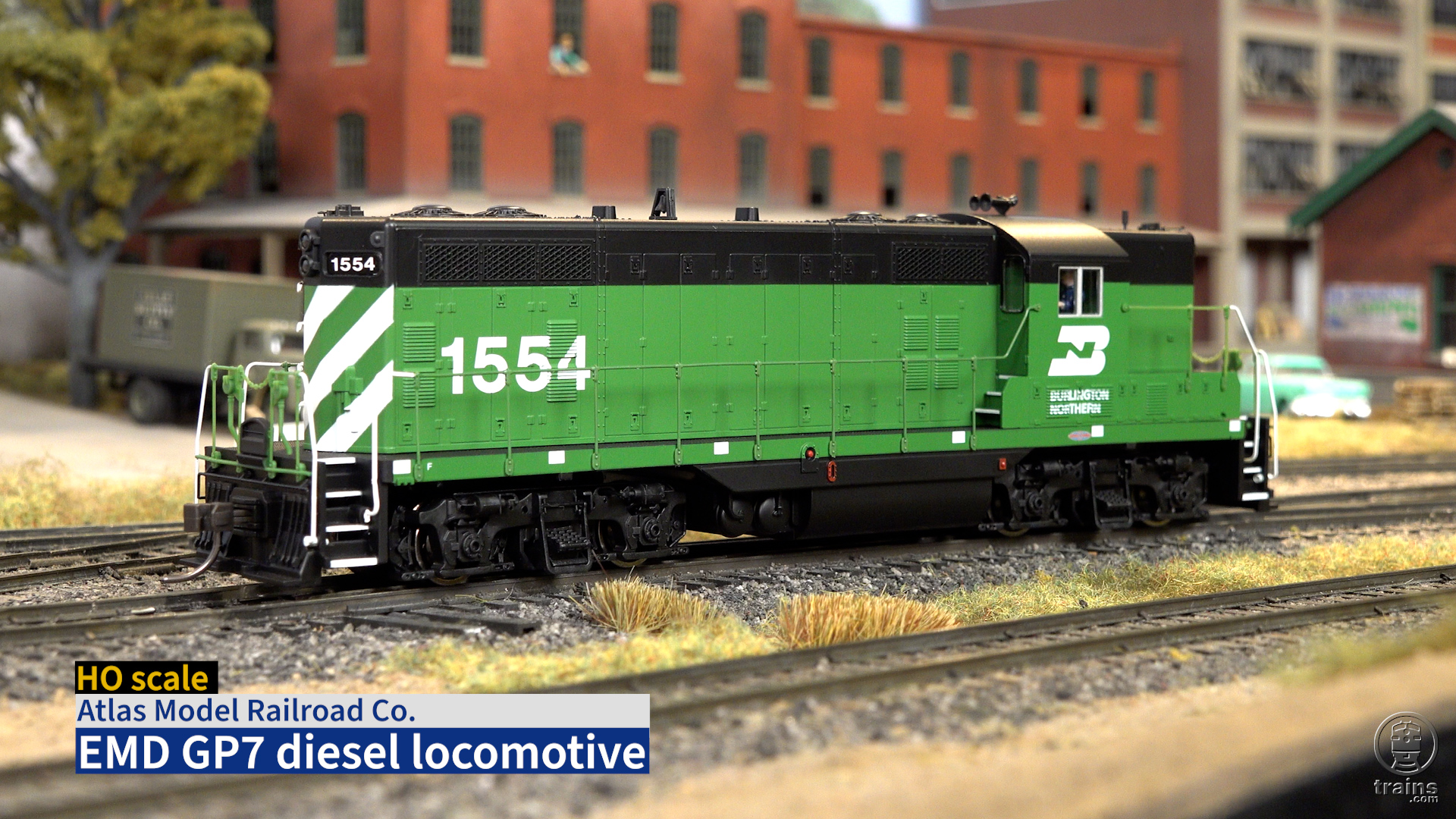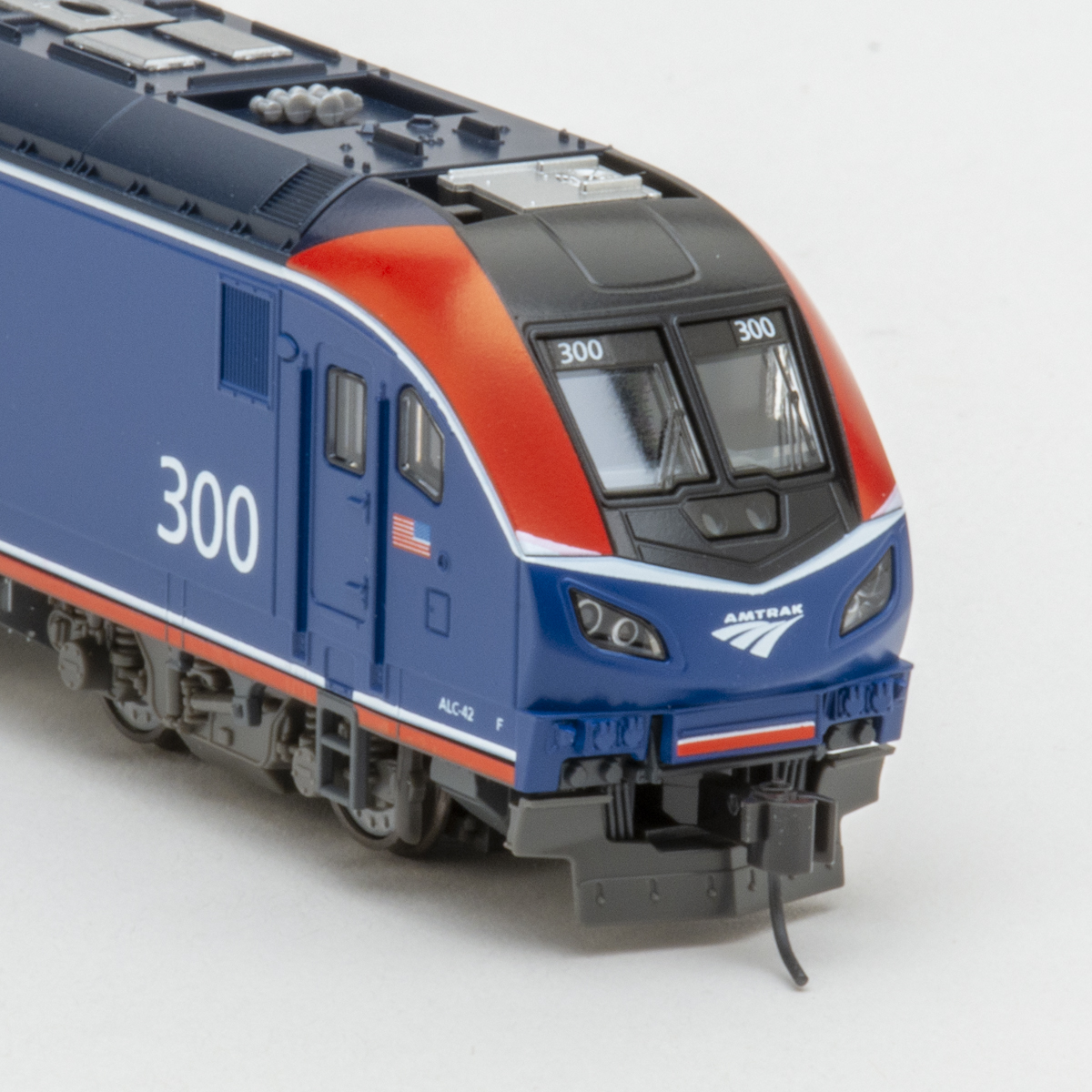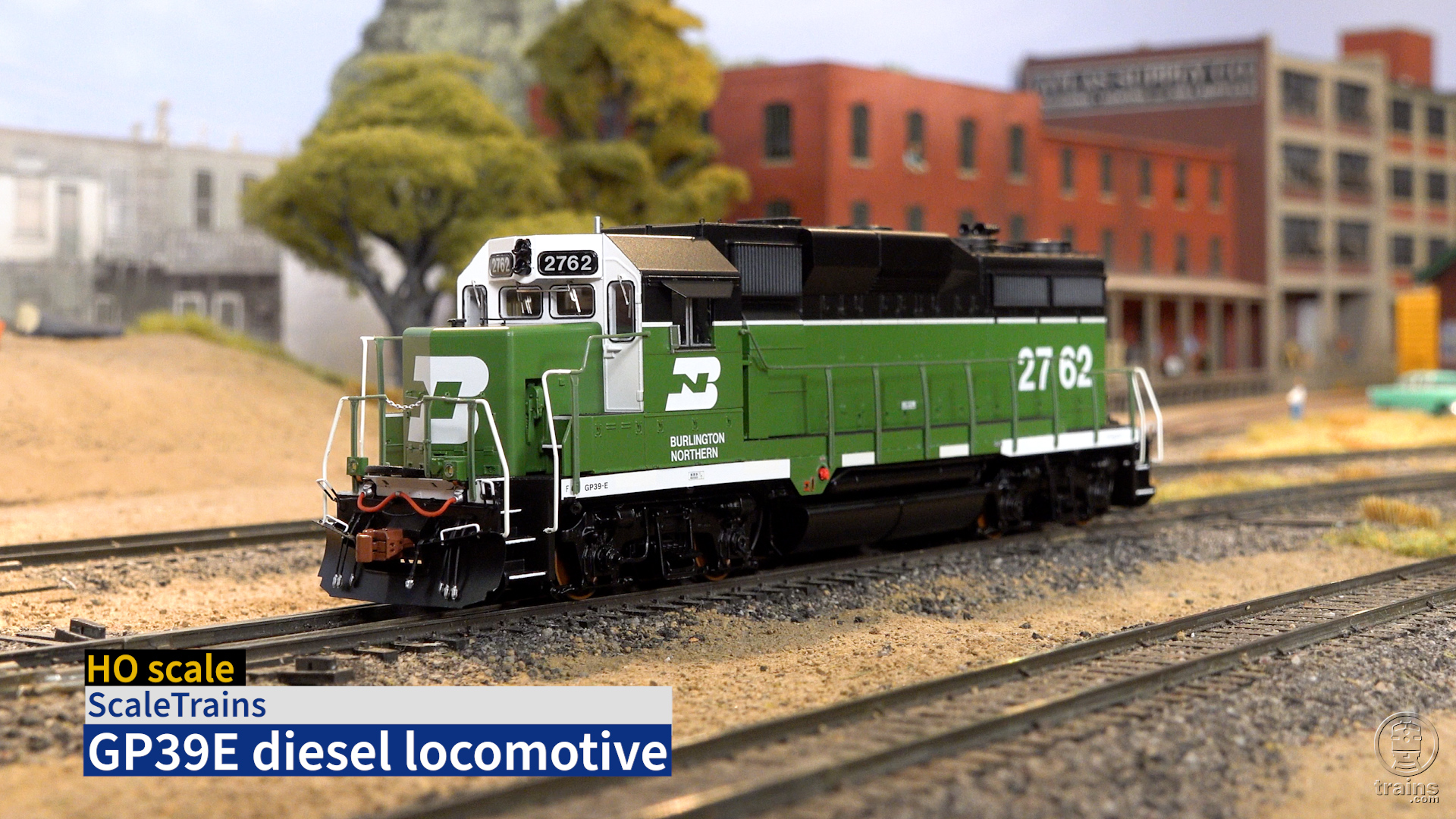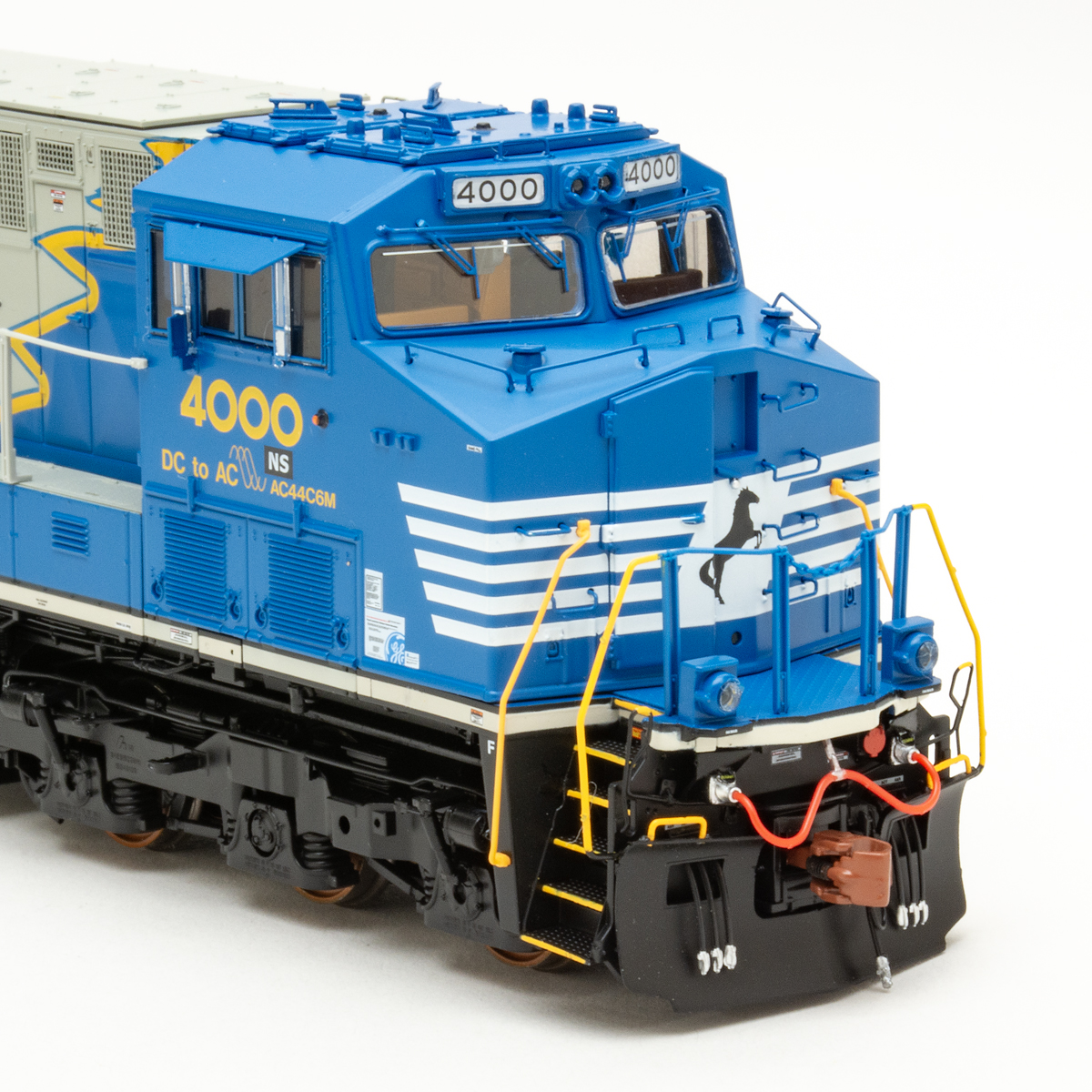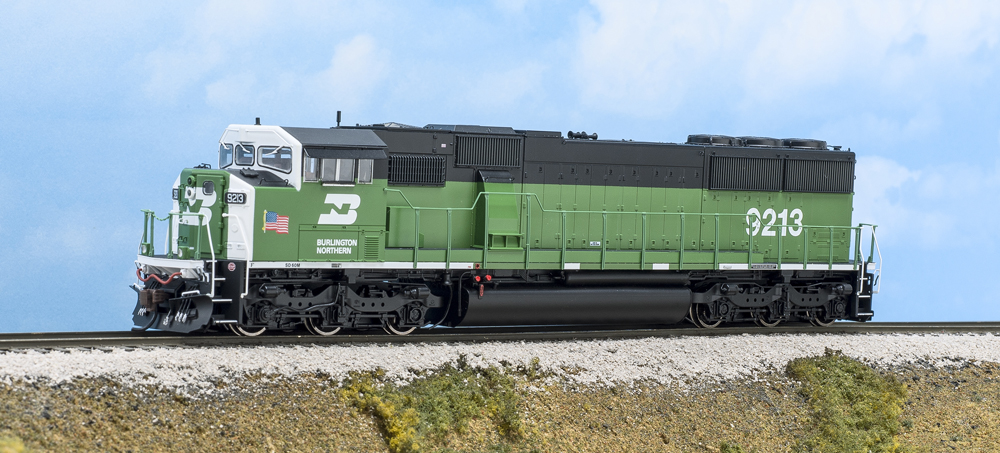
A newly tooled HO scale Electro-Motive Division (EMD) SD60M diesel locomotive has been added to Athearn’s Genesis 2.0 line. The model, based on the three-window North American-cab version of the road locomotive, features ground lights, vinyl m.u. cables and trainline hoses, and molded traction motor detail on the gear boxes.
Meet “triclops.” Electro-Motive Division produced the SD60M from January 1989 through June 1993. During the production run, 461 units were produced. The six-axle road locomotives, rated at 3,800hp, were equipped with a 16-710G diesel engine.
Electro-Motive Division offered the SD60M with three-piece windshields from 1989 to 1991. This is the version Athearn’s new model is based on. In the railfan community, these diesels have been given the nickname “triclops.” Union Pacific, Burlington Northern, and Soo Line were the only roads to originally roster this version of the SD60M.
Our sample is decorated as BN no. 9213. The full-size locomotive was built in January 1990. The model has a window on the front cab door, a modification made to the full-size units after they were in service for a few years. The American flags were applied between February and May 1991.
In November 2006, the unit received BNSF stencils but retained its BN road number and scheme. Since then, the SD60M has been renumbered twice, first to 8113 (in 2007) then 1404 (2017). Not long after its 2017 renumbering, the SD60M was repainted in BNSF’s Heritage III scheme. Today, most former BN SD60Ms on BNSF’s roster are used in yard service and on locals and turns.
The Athearn SD60M shell consists of an injection-molded plastic cab, body, and sill/pilot. The three-piece window casting and front door are separate parts. The roof, secured to the cab with magnets, is removable. Three seats, an engineer’s control desk, a conductor’s console, and a rear bulkhead are inside the cab. No crew figures are included, but they’d be easy to add. Each side of the cab has a long sunshade and mirror. Wipers are attached above the front and rear cab windows.
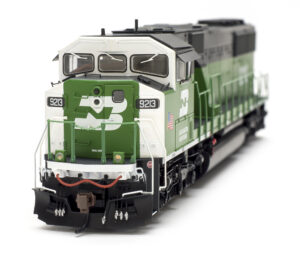
Factory-painted wire grab irons are secured to the cab and rear of the long hood. The handrails and stanchions are Celcon. Separate parts on the front pilot include a snow plow and m.u. cable. An uncoupling lever, three-cluster m.u. cables, trainline air hose, and m.u. receptacles are on both pilots.
The roof features a mix of molded and separate, factory-applied parts. A firecracker and small can antenna are the two separate parts on the cab roof. The air horn, lift rings, angled radiator fan grab iron, and three Q-fans are freestanding on the long hood. The dynamic brake exhaust is a separate casting. Though the exhaust is molded, careful masking and painting give it a 3-D look.
The bulk of the details on the sides of the long hood are molded. Separate parts include an electrical cabinet (brakeman’s side), a brake wheel (engineer’s side), and see-through dynamic brake intake vents (both sides).
An assortment of details are attached to the bottom of the sills, including cable bundles, an air filter with pipe, and a toilet drain. The fuel tank is a multi-piece assembly with separate parts.
The trucks are also well detailed. Our BN sample has rotating bearing caps, a speed recorder on the front brakeman’s side truck, and brake line plumbing between the cylinders.
The BN SD60M is advertised as having deck-mounted strobe lights. The housings look a bit oversized compared to prototype photos. The lights, which accurately flash in an alternating pattern, look more incandescent than strobe-like.
Under the shell. Removing the shell is an involved process. First, I unscrewed and removed the draft-gear boxes. Then I removed a screw above the rear truck, just behind the fuel tank, on the brakeman’s side. The screw over the front truck on the engineer’s side is partially covered by the fuel tank, so I removed that, too. Finally, I opened the S hooks attached to the brake link chain and tension spring to release the metal chain.
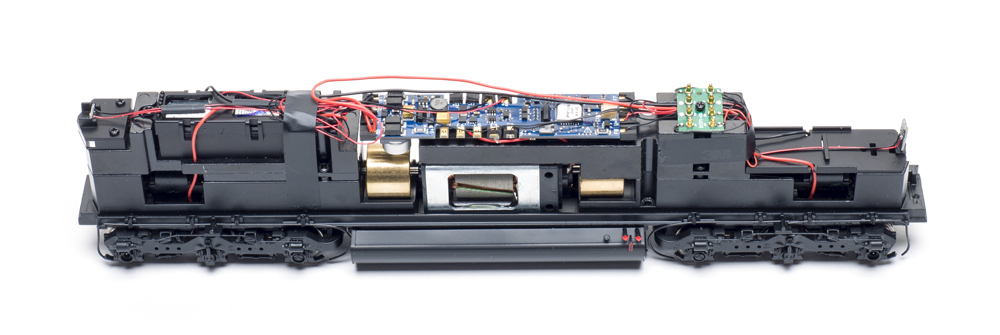
The motor, framed by two brass flywheels, is secured with screws to the center of the chassis. The motherboard for the SoundTraxx Tsunami2 sound decoder is held in place by two plastic clips above the motor. A pair of cube speakers are mounted in a plastic housing above the rear truck.
By the numbers. The paint on our SD60M is smooth and evenly applied, with crisp separation lines between the colors. The lettering and warning label placement matches prototype photos I found online.
I compared the HO scale locomotive to prototype drawings in EMD’s SD60 Series by Diesel Era magazine (Withers Publishing, 1996). The model follows or is within scale inches of published data.
Our sample is equipped with a dual-mode SoundTraxx Tsunami2 sound decoder, so I tested the model in both environments. I used a Bachmann power pack to test the model in DC mode. The sounds came on a 7V, and the locomotive started moving at 2 scale mph at 9.6V. The model achieved a top speed of 40 scale mph at 13.8V.
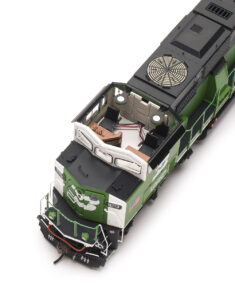
Then I used an NCE PowerCab to test the SD60M in Digital Command Con-trol (DCC). The model’s speed range was more realistic. At step 1 the locomotive moved at 4 scale mph. The six-axle road unit topped out at 71 scale mph at step 28. The full-size SD60M had a top speed of 70 mph.
With a drawbar pull of 4.8 ounces, the SD60M is capable of pulling 67 free-rolling freight cars on straight and level track. On our Milwaukee, Racine & Troy staff layout, the road unit pulled 16 50-foot freight cars up a 3 percent grade.
While running the SD60M on the MR&T I noticed it would derail periodically. The track and wheel gauge were correct, and the gears appeared to be in good shape, so I reached out to Athearn. I learned that some, but not all, SD60M models had issues with derailing and the bearing caps falling off.
A post on the Athearn Facebook page noted in part, “Athearn is not advising any specific DIY repairs to these locomotives currently. Primarily because we do not want you to inadvertently damage the locomotive’s fine details, but also because we’re expecting the forthcoming solution to be a better fix requiring very minimal effort.”
Athearn’s model is well proportioned and has many railroad-specific features. As decorated, a pair of SD60Ms teamed with an EMD SD40-2 would look right at home on the point of a unit coal train.
Facts & features
Price: With 21-pin NEM connector, $249.98; with SoundTraxx Tsunami2 sound decoder, $339.98.
Manufacturer
Athearn Trains
1600 Forbes Way, Ste. 120
Long Beach, CA 90810
athearn.com
Era: February 1991 to November 2006 (as decorated)
Road names: Burlington Northern (four road numbers), BNSF Ry. (BN patchout in two numbers, Heritage II and Heritage III in one number each), Canadian Pacific (with beaver herald in one number, without in two numbers), Norfolk Southern (Thoroughbred scheme, three numbers), and Union Pacific (as-delivered scheme, four numbers).
Features
– 40″ metal wheel stubs on plastic axles, in gauge
– Etched-metal see-through walkway steps
– HTC gear boxes with traction motor detail
– Illuminated number boxes and ground lights
– Light-emitting-diode ditch lights and headlights
– McHenry scale couplers, mounted at correct height
– Removable roof secured with magnets
– Vinyl m.u. cables and trainline hoses
– Weight: 1 pound, 6.2 ounces






